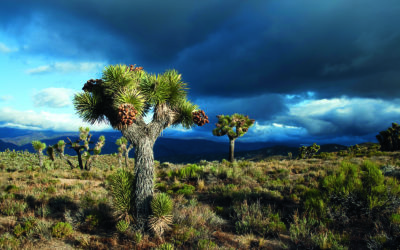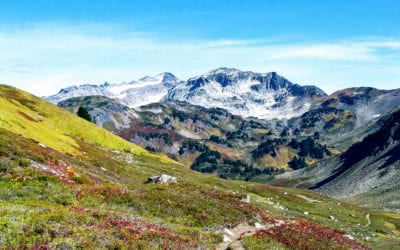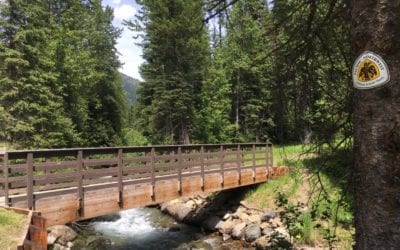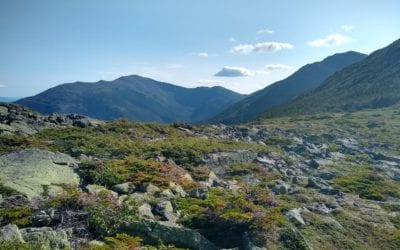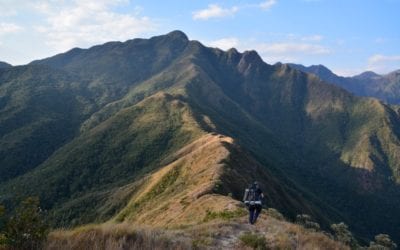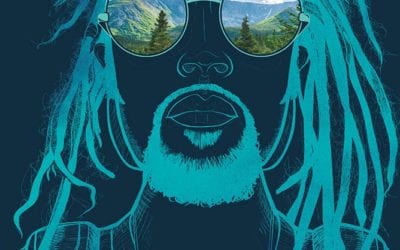Sunrise at 1000 Island Lake on the Pacific Crest Trail. © Thomas Piekunka
In this issue
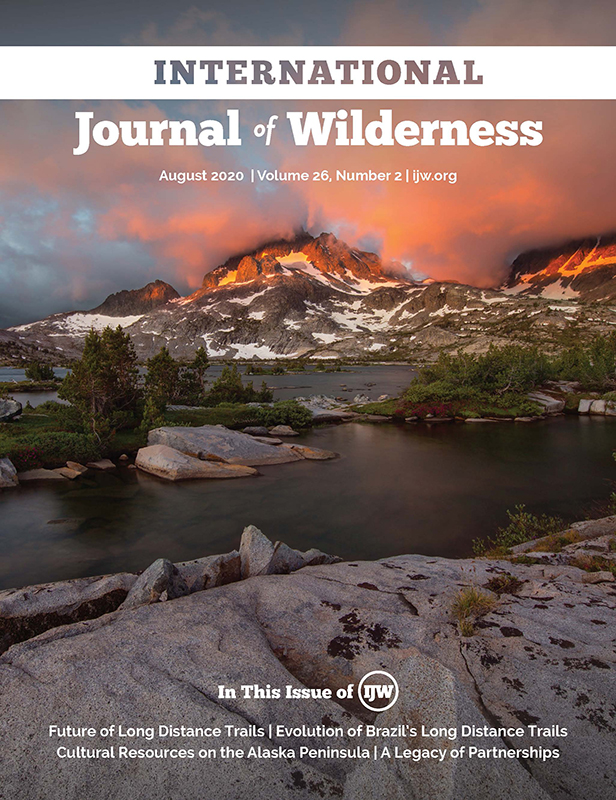 This special edition on long distance trails starts with the Soul of the Wilderness where Beth Boyst shares the opportunities and benefits of collaboration and a shared vision and stewardship for National Scenic Trails (NSTs) and wilderness Areas. Next, Cerveny, Derrien, and Miller provide a foundation for understanding the evolving role of partners in the shared stewardship of National Scenic Trails. Reigner and Wimpey discuss key insights on how collaboration can inform multi-jurisdictional management through examples of the Pacific Crest National Scenic and John Muir Trails. Then, Cole and Thomsen provide findings of social aspects of the thru-hiker experience before, during, and after the completion of the Pacific Northwest National Scenic Trail and how this social experience influences hike preparation, response to challenges during the hike, and the transition back to everyday life.
This special edition on long distance trails starts with the Soul of the Wilderness where Beth Boyst shares the opportunities and benefits of collaboration and a shared vision and stewardship for National Scenic Trails (NSTs) and wilderness Areas. Next, Cerveny, Derrien, and Miller provide a foundation for understanding the evolving role of partners in the shared stewardship of National Scenic Trails. Reigner and Wimpey discuss key insights on how collaboration can inform multi-jurisdictional management through examples of the Pacific Crest National Scenic and John Muir Trails. Then, Cole and Thomsen provide findings of social aspects of the thru-hiker experience before, during, and after the completion of the Pacific Northwest National Scenic Trail and how this social experience influences hike preparation, response to challenges during the hike, and the transition back to everyday life.
Stelson, Rice, and Taff share findings from a culturally significant trail through the Katmai Wilderness to discuss the importance of considering cultural resources in long-distance trail planning and management. Then, Rogers and Leung provide findings for how emerging technologies create opportunities and challenges for managers and recreationists of the Appalachian Trail and how this information can inform spatial decisions. Finally, Cunha et al. offer an international perspective on the growth and evolution of the Brazilian long-distance trail system, the involvement of diverse groups, and challenges facing the future.
Bigart’s book review of a recently published The Unlikely Thru-Hiker by Derick Lugo highlights the unique perspective of the author as an African-American thru-hiker with no previous outdoor experience on his Appalachian Trail journey. The review offers key insights to how thru-hiking can be a more inclusive and diverse type of recreation and the impacts of these immersive experiences.
Get started by reading the articles below. You can also view and/or download the full issue at the bottom of this page.
Articles
Foundation and Future of Long Distance Trails
We begin this special edition of the International Journal of Wilderness with references to the U.S. Wilderness and National Trails System Acts to illustrate the significance and interconnectedness of wilderness areas and long-distance trails.
With Collaboration We Can Overcome Challenges Together
The concepts of “shared stewardship” or “collaborative management” can be challenging. They require shared vision, definition of clear roles and responsibilities, and commitment to the collaborative process.
Shared Stewardship and National Scenic Trails: Building on a Legacy of Partnerships
National Scenic Trails connect people with the natural and cultural heritage of the United States. Theses trails also provide important opportunities for agencies to engage partners in trail stewardship and sponsorship.
Multi-jurisdictional collaborative management of the Pacific Crest, National Scenic, and John Muir Trails
Information about visitor use in parks and protected areas is an essential component of effective management.
Understanding the Role of Social Interactions During Different Phases of the Thru-Hiker Experience
Despite the recent popularity of thru-hiking, there is little known about how social interactions across the different phases of the recreational experience.
Managing Cultural Resources On The Alaska Peninsula
Across the Wilderness Preservation System, there is an increasing interest by federal agencies in the management of contemporary cultural resources—those left behind “by hunters, traders, miners, settlers, and travelers”.
Smarter Long-Distance Hike: How Smartphones Shape Information Use and Spatial Decisions on the Appalachian Trail
Through semi-structured, in-depth interviews with 20 Appalachian Trail (AT) long-distance hikers, we explored hikers’ use of information sources, including smartphone-based sources, and spatial decisions.
The evolution of long-distance trails in Brazil and future perspectives
Brazil’s long-distance trails (LDT) are the descendants of historical routes of travel for indigenous peoples that date back thousands of years.
Book Review
The Unlikely Thru-Hiker: An Appalachian Trail Journey. By Derick Lugo
View the full journal
Please note: Individual electronic access, passwords, and IP address access are intended for the subscriber only. These means of access should not be shared, posted, or distributed without the consent of the IJW team.
To download: click the button above, and then click the download button at the top left corner of the newly opened tab.


